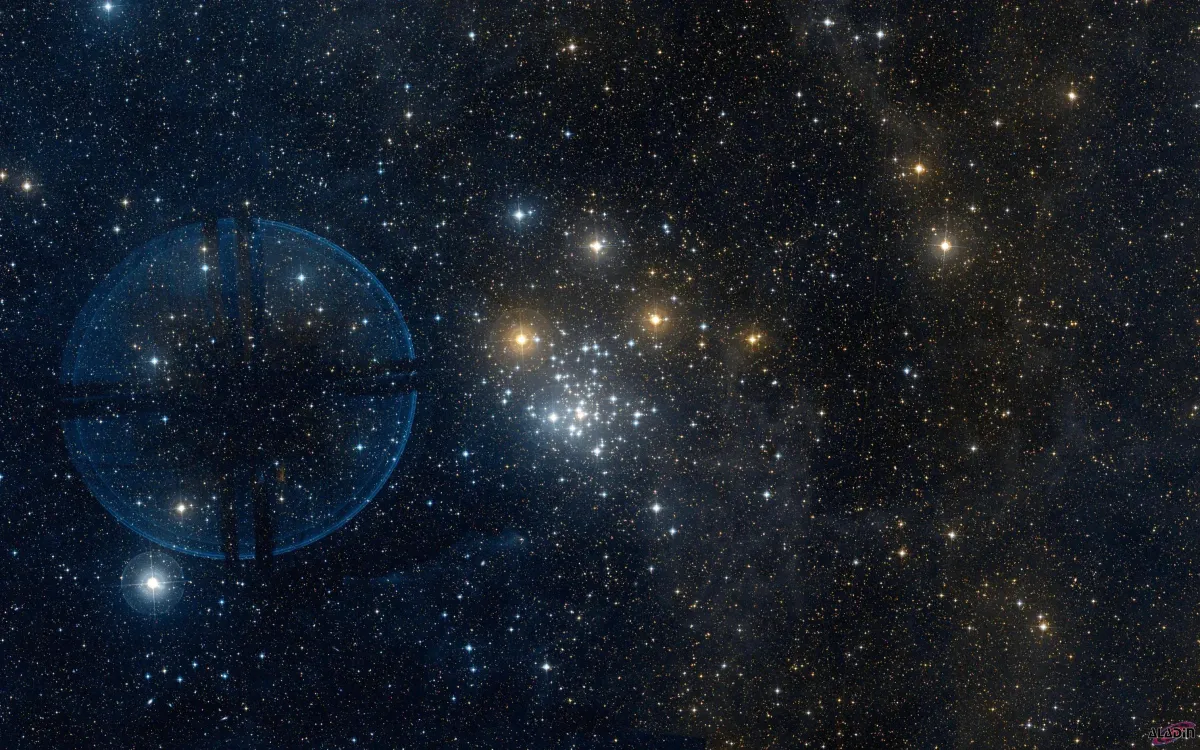Southern Beehive Cluster (NGC 2516)

History
This open cluster was discovered by French astronomer Nicolas-Louis de Lacaille in 1751-1752 using a ½-inch telescope at 8x during his expedition to the Cape of Good Hope. He listed it as Lac II-3 and noted: «A group of ten to twelve closely packed stars.» [8]
John Herschel listed this cluster as h 3111 and observed it six times. His first observation was on 29 December 1837 (sweep 527) where he noted: «An orange-coloured star 8th magnitude, in middle of a large and magnificent cluster of perhaps 200 to 250 stars 8..16th mag. Many of the larger magnitudes, and really a superb object. Very visible to the naked eye, etc. A double star in the same cluster» [11]
Physical Properties
| Designation | NGC 2516 |
| Type | OCL (I3r) |
| Right Ascension (J2000.0) | 07h 58m 04.0s |
| Declination (J2000.0) | -60° 45' 12" |
| Diameter | 22 arcmin |
| Photographic (blue) magnitude | 3.8 mag |
| Visual magnitude | 3.8 mag |
| Metric Distance | 0.346 kpc |
| Dreyer Description | Cl, vB, vL, pRi, st 7…13 |
| Identification, Remarks | h 3111; GC 1619; OCL 776; ESO 124-SC6 |
Finder Chart
The open cluster NGC 2516 is located in the constellation Carina. Unfortunately it is not visible from Europe. On 18 January it in opposition with the Sun and is therefore highest in the sky at local midnight.
